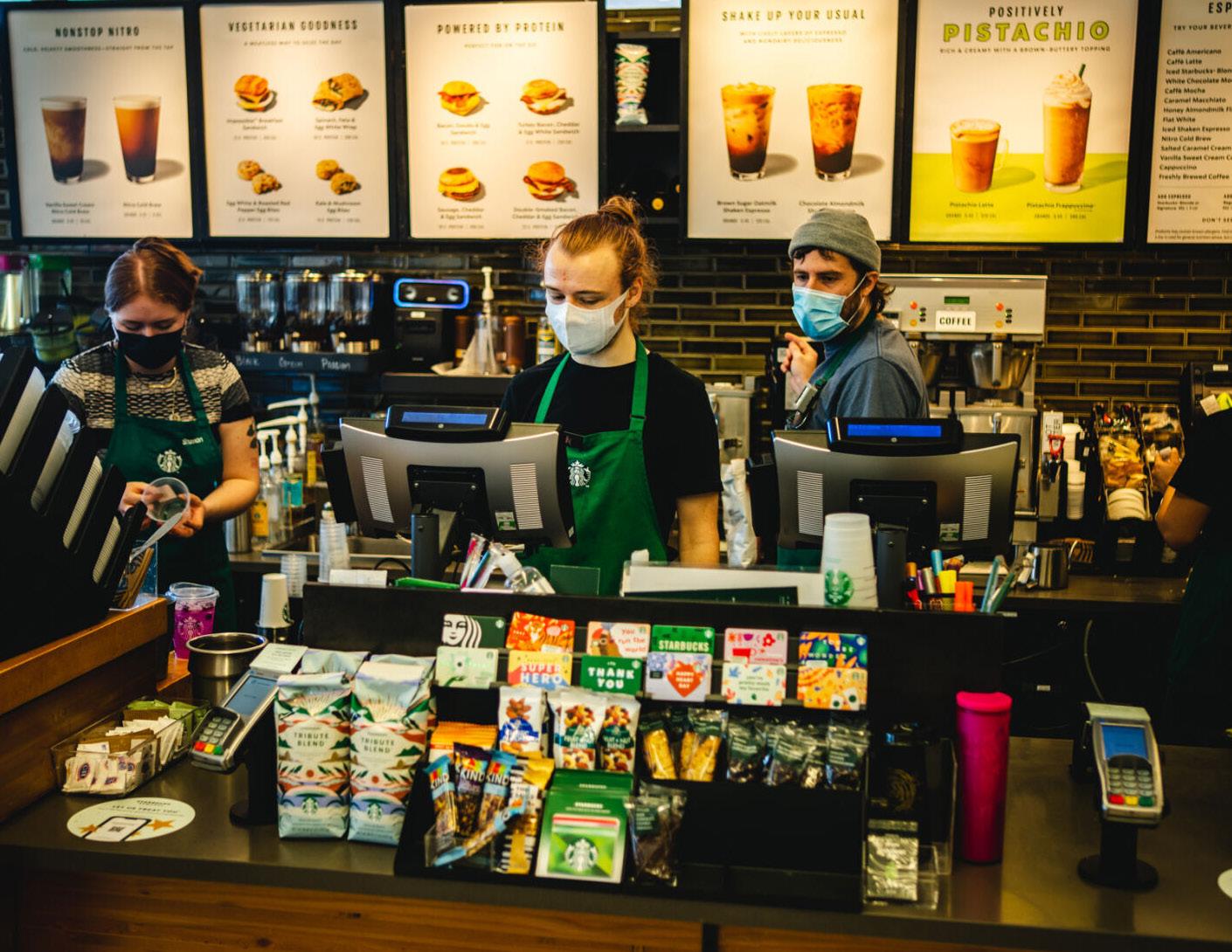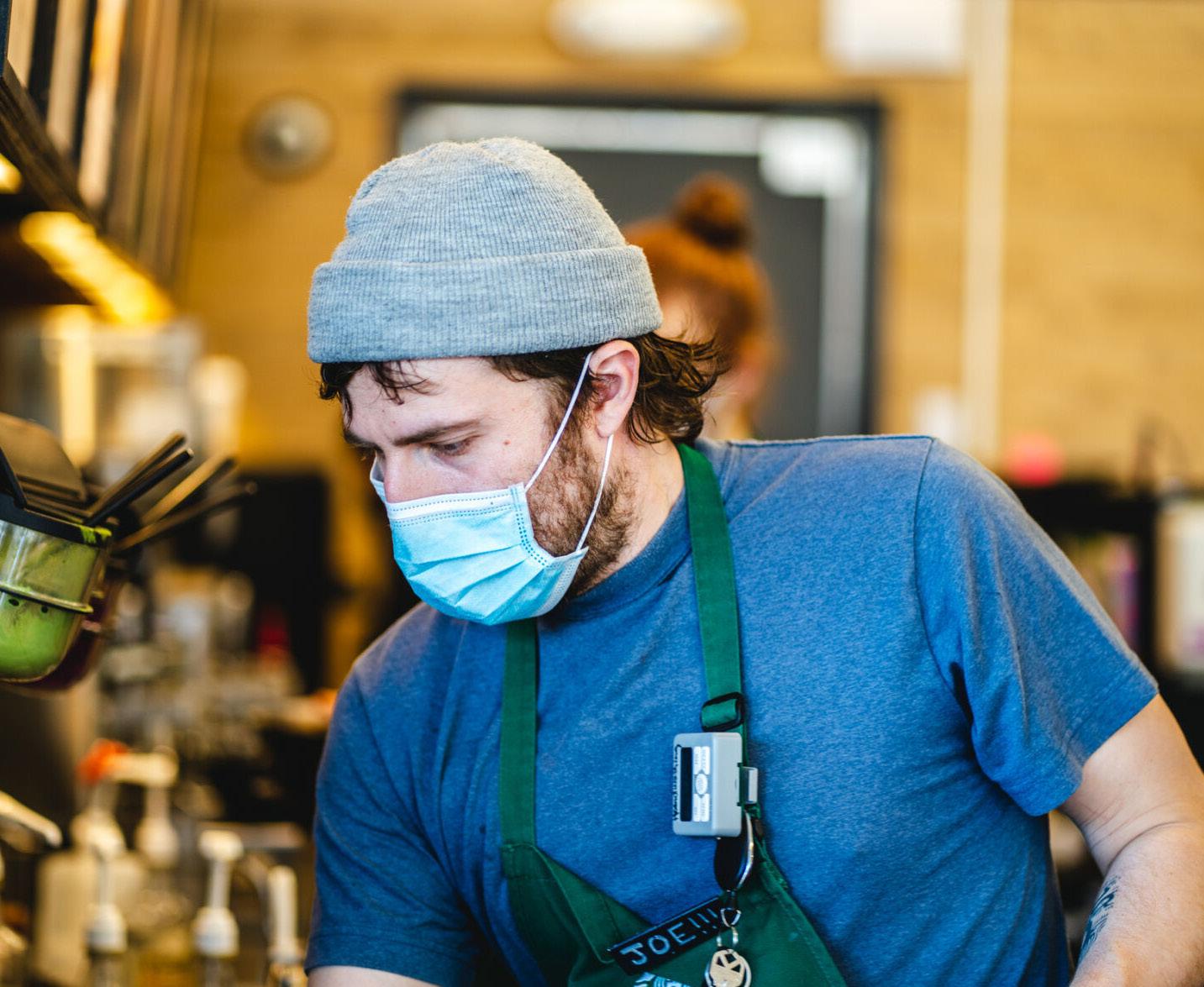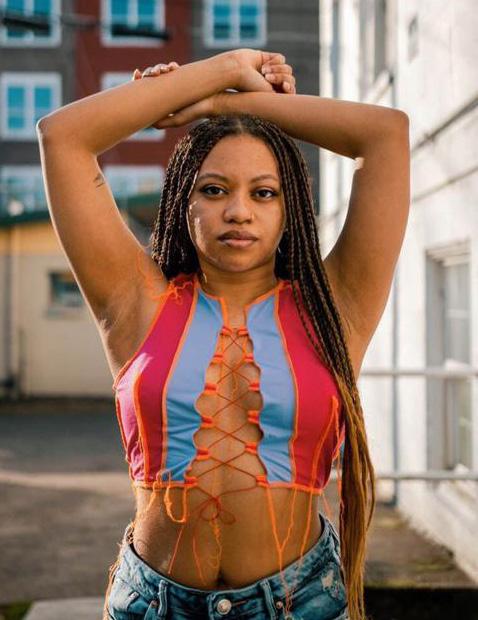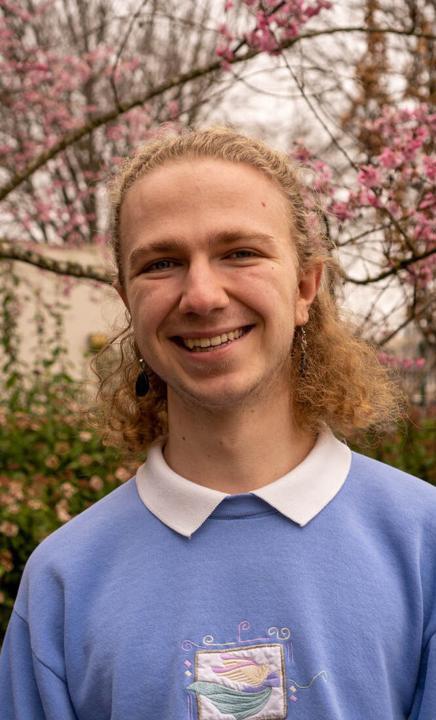
15 minute read
EMU STARBUCKS FILES TO UNIONIZE
Starbucks employees fulfill the constant stream of orders during the day. The Starbucks in the ERB Memorial Union on campus is working towards unionizing their workforce. (Will Geschke/Emerald)


Starbucks workers at the Erb Memorial Union location filed to unionize on Jan. 4 and will vote on unionization in the coming weeks. BY ABBY SOURWINE
The Erb Memorial Union Starbucks have joined the national wave of unionization, bringing the total number of unionized Eugene Starbucks locations to six. EMU Starbucks employees sent signed union cards to the National Labor Relations Board on Jan. 4.
Private sector employees, like Starbucks “partners,” sign union cards to indicate interest in being represented by a union. A workplace must collect cards from at least 30% of employees and send them to the NLRB. Once the cards are processed, which can take six to eight weeks, employees hold a vote to determine if they will be represented by a union. That vote is decided by a simple majority.
Union supporters hope to bargain for better working conditions and higher wages.
“The working conditions are pretty horrific,” Kenny Park, a partner since May, said.
At the crux of these poor conditions is the volume of orders. Park said the store pulls in more orders than anywhere else in the district. To compensate, 12-15 partners are on the clock during peak times and 10 are behind the counter in a very narrow space, Park said.
This makes it impossible to maintain a COVID-safe distance between employees but also poses threats to physical safety.
Owen Wach, a supervisor at the EMU location, said some partners have gotten concussions from hitting their heads on oven doors.
“There's a lot of unsafe elements of the store where even the fire marshal said, ‘This isn't acceptable, but there's nothing better you can do,’” Wach said.
For instance, the breaker box is covered by a trash can, which is a fire hazard, but there is physically no other place to put the trash can, so it stays in this unsafe spot, Wach said.
Employees hope to improve conditions through a store remodel. Wach said managers have discussed a potential remodel to add space and address safety concerns for years, but nothing has come of it.
“I'm hoping that the unionization will fast track that, so we can have a safe space to work in,” Trinity Smith, a partner since June, said. “If we just had a few more feet of space in our building, we would have more space just to breathe and calm down because it's already so stressful.”
The nature of a Starbucks location in the EMU means the majority of customers are University of Oregon students. This can contribute to more friendly customer interactions, but can also mean tips are “humiliating,” Park said.
Wach worked at the Oakway Starbucks location before coming to the EMU. They said at Oakway they could expect to make about $2 per hour in tips. At the EMU location, he can expect seven to 14 cents.
“We don't make any tips just because it's students,” Smith said. “While that's completely understandable — it's up to the customer completely — we all feel like our pay should reflect the work that we're putting into the company.”
All Starbucks employees received $15/hour at the start of the COVID-19 pandemic, which increased wages for many, but those wage increases have been reversed.
Now that they’ve filed, employees have faced some intimidation tactics from bosses. Higher-ups from Starbucks locations outside of the district have shown up to say “we’re here for you” and discourage voting for a union, Wach said. Partners have also been called into two-on-one conversations between a partner, a district manager and another manager.
“These meetings aren't mandatory, but they're framed as being mandatory,” Wach said. “It's really hard to say, ‘Oh, my boss and her boss. I don't really want to talk to you two.’”
In these meetings, partners are told forming a union could take away employee benefits.
“The partners leading the union are very knowledgeable and won’t fall for the fear mongering Starbucks is currently trying to throw our way,” Park said.
Wach is one of the partners highly invested in the union-forming process. They said they feel invested in their working conditions and hope others will, too.
“There's a lot more investment and a sense of being part of something larger,” he said. “I feel like it really is becoming a movement not just with us, but also hopefully with other public sector jobs. So much customer service stuff is so hard and so unfair to the people that work it. It's just very exciting being a big part of that and, optimistically, I really hope that this spreads.”
SAD: THE STRAW THAT BROKE THE ARTIST’S BACK
Musicians, writers and artists persevere through the winter gloom, using art to cope or struggling with motivation and mental health.
In a typical Eugene October, you hear the crunch of red and orange tinged leaves under your feet as you wade through a layer of them on the sidewalk. You’ll look up at the gray colored sky and feel the first drop of rain hit your nose and slide down your face. As the drizzle turns to a downpour, you’ll pull your raincoat closer around you in a vain attempt to keep warm as you march to class. You may even feel dread creep through your body, realizing that this cold, rainy gloom will continue until March.
During these winter months is when seasonal depression, otherwise known as seasonal affective disorder, starts to hit 5% of U.S. adults, according to TimelyMD — with about 15% experiencing mild symptoms such as changes in mood or energy, according to Yale Medicine. A condition more common among women and people further from the equator, SAD comes from a lack of natural sunlight and shorter days from the winter, resulting in a change of brain chemistry.
For artists and creatives who have seasonal depression, or are simply affected by the change in seasons, they not only see a change in themselves — but in the way they create.
Reflecting the environment

Artists are often inspired by the world around them, attempting to mirror their environment and experiences. For UO professor and poet Daniel Anderson, the gloominess of winter months combines with the influential experiences he had during the season — which comes out in his writing.
Anderson teaches poetry at UO and has been expressing himself through writing since high school. He now has several published poems under his belt.
After facing the loss of a friend in high school, writing and music became emotional outlets for Anderson.
“One of the things that I believe all early writers want to do is express themselves,” Anderson said, adding that a key part of writing is being able to use one’s personal experiences in a way that allows readers to relate.
Anderson works to teach these skills of expressing and evoking emotions to his creative writing students. Although he hasn’t noticed a difference in the work students produce during different seasons, Anderson is confident about one thing — writers often try to reflect the world they live in.
“When one writes, there’s a real desire to replicate time and place,” Anderson said, noting the strong influence a dreary environment can have. “One of the more powerful draws as writers, a draw to the imagination, is a period of gloominess.”
Recreating one’s dark, gloomy environment is a common occurrence in literature, Anderson said. An example can be found in the poem “Stopping by Woods on a Snowy Evening” by Robert Frost — one of Anderson’s favorite poets.
“My little horse must think it queer, to stop without a farmhouse near,” Frost writes. “Between the woods and frozen lake, the darkest evening of the year.”
The images of darkness and winter cold are reflected in the poem. The imagery implies a snowy night on the winter solstice, capturing the freeze and isolation one feels in the woods at nightfall.
Anderson said that the changing seasons — moving from the summer sunshine to the onset of early twilights — used to inspire his work.
“As a younger person, I was seasonally moved a lot more than I am now,” Anderson said, noting his simultaneous love and hatred of the end of daylight savings in the fall. “I loved the early darkness — so beautiful, so incongruous.”
Anderson said this phenomenon has to do with the strong connection between our formative experiences and the time of year in which they occur — whether that be the memory of falling in love for the first time or a traumatic event, we will remember the time of year it happened, and artists may try to commemorate it.

BY KRISTA KROISS • TWITTER @KRISTAKROISS
(Photo courtesy of Daniel Anderson)
Milaan Moses is a dancer, musican and dance instructor. (Photo courtesy of Gordan Mindoro)
Art and identity
Being a member of a marginalized community means dealing with discrimination and societal ignorance, but these weights can become even heavier during the winter, with the onset of seasonal depression.
For UO alumni and local dance instructor Milaan Moses, seasonal depression combines with her identity as a Black woman to influence her well being and her craft.
After struggling with her Black identity for much of her childhood, Moses was able to truly connect with it after finding others that relate to her experience as a Black woman in college. Her senior year of dance at UO is when her Black identity really connected with her and her art.
“I used my identity as a platform to speak for other people like me, creating dances that were not for the majority,” Moses said, adding that she takes pride and comfort in this.
Moses’s senior dance piece, “On This Street,” is one of the only senior hip-hop pieces to come out of UO’s modern dance-focused school of dance and was made to represent the few POC in the program. The piece was based on her experiences and emotions being a Black woman, looking over her shoulder in fear of racism while dancing in her own neighborhood.
Seasonal depression adds another weight to traumas like these, something that Moses jokes with herself about.
“I always like to say this is the time of year
when my normal depression meets my seasonal depression,” Moses said.
Moses explained her struggle with depression and seasonal depression, expressing that because she has been successful in creating during the low points of her life it has led to a desire to have those low points again.
“For a long time, I felt that my best work came out of a time when I was at my lowest, and I always got the most done,” Moses said. “I was constantly craving that low.”
Over the last year, Moses has been able to do a lot of self-reflection and healing and is in a much better position to cope with depression and seasonal depression than she used to be. But her dance students — kids going through similar issues — don’t always have those resources, both because they are young and because the COVID-19 pandemic has blocked off much of the outside world.
“Students are affected the way I’m affected,” Moses said, adding that this is especially true at Xcape Dance academy, which is more geared towards BIPOC and low income students. “You really see how trauma affects them, and it comes out in their dancing.”
Moses teaches at three different dance studios — Eugene Ballet Academy, Xcape Dance Academy and Flex Studios — and notices a stark difference in the demographics of each. She has also noticed differences in how kids from different backgrounds handle the impacts of winter on their mental health.
For kids already facing racism or poverty, the “dark days become even darker,” she said.
With a dreary winter adding another layer of challenges to already difficult times — from discrimination to the COVID-19 pandemic — it can be hard to find a way be optimistic this time of year.
Yet freshman Max Spears, who plays trombone, finds a way.
Spears is dual enrolled at UO and Lane Community College and hopes to be fully enrolled at UO as a music education major next year. Like Moses, Spears found that the change in climate during fall and winter impacts his mental health, adding to the struggles already present during the pandemic and political turmoil of the last few years.
On top of the environmental contexts in the last couple years, Spears is a gay man who has been forced to deal with homophobia. Even if Eugene is more accepting than parts of rural Oregon, there are times when he still fears that something as small as his clothes could lead to homophobic comments on the streets, he said.
But when the difficulty of the pandemic, winter and general anxiety sinks in, Spears’s focus is on finding inspiration through gratitude.
“I just think it makes music and art that much more special,” Spears said. “I try to treasure that more.”

Sapping motivation
For many artists, their work is their passion — something they want to do all the time. However, during the hardships winter months can bring, some struggle to find motivation and productivity for their craft.
For Spears, the effects of seasonal depression start in the fall, making him feel more drowsy and less motivated, especially with the pandemic making him more isolated.
“It adds more anxiety to what you already might have,” Spears said, speaking on the way the pandemic and seasonal changes impact his mental health. “I think 2020 really took a toll on my musicianship and motivation.”
Kyle Bulcao-Moore, a UO art and technology major, said she finds herself much less motivated to create during the winter months — not because of seasonal depression alone, but because it is like another burden on the pile with mental illness.
“Instead of coping, I’m more wallow,” BulcaoMoore said, adding that she creates a lot less when she is cooped up in the winter months. “I’m not going outside enough; I’m not being inspired by anything; I’m not excited to create.”
Lack of motivation is a common feeling for Moses, Spears and Bulcao-Moore during the fall and winter. Marigold Stenger, a local musician, also found that her productivity takes the biggest hit during the season.
“It’s sometimes harder to focus on the music and be 100% involved in the winter months,” Stenger said. “I’m balancing a lot of different things, along with any mental struggles that are going on.”
Stenger is a musician with her own band, but she does a lot more than that — she’s a full time student, a model and has a job. It is hard to manage these responsibilities in general, but even more so during the winter.
“I notice that burnout and mental health in general become a major struggle for me in the winter,” Stenger said, noting that in her mind productivity defines her value, causing her to have unrealistic standards for herself.
Moses also faces difficulty with productivity in the winter, especially because she is from Southern California — where the winters are not as cold or dark as those in Oregon. Being unadjusted to the constant hazy rain, Moses said it is challenging for her to be creative without sunshine.
“Here, it’s always dark, and always cold,” Moses said, adding that the lack of sunlight makes it more difficult to be productive creatively. “I get so frustrated because I constantly want to create, and I feel like I can’t.”
Darker times, brighter colors
Coping with difficult and challenging times is a common purpose for art during the winter. Many find comfort in strumming sad songs on a guitar or writing a story around the gloominess outside.
However, Bulcao-Moore has a different method of handling the impact of seasonal depression.
“In a way, I think I try to combat seasonal depression with an overcorrection,” Bulcao-Moore said. “My art gets more colorful, more vibrant, whenever I’m going through more.”
Bulcao-Moore said this strategy is a way to cheer herself up when she needs it and to cope with her negative emotions.
“If I’m ever feeling genuinely gross or something, instead of writing in a journal I will just draw until I feel like all my emotions have gotten out onto the page,” Bulcao-Moore said. “I try to turn my bad feelings into this very vibrant fun looking thing, even if the concept isn’t so much the same.”
An example of this is a piece Bulcao-Moore made last December, captioned “NINE TO FIVE” with a note about feeling burnt out on her social media post. The piece features bright orange and calm, dark blues with a sunny sky in the background. We see people — hunched over in a way suggesting they are drained or unhappy — going through an office building and coming out with a cloud over their heads. In the same building another person cries in the bathroom, and another sits on the front steps with a blue face, demonstrating the sadness they carry.
At a glance the work has fun colors on an interesting and seemingly energetic backdrop, but a closer look reveals a message on the standard 9-to-5 expectations of society, arguing it leaves people drained and unhappy with their life. In this way, Bulcao-Moore is able to express her emotions on societal expectations and burnout with happy-feeling colors.
As a whole, seasonal depression can dampen the spirits and motivation of creatives trying to further their craft — especially in the context of the pandemic. With all the challenges in mood and productivity on top of general life stresses, Anderson does have some advice for struggling students: “Be good to yourself.”
Max Spears is a dual University of Oregon and Lane Community College student with a passion for the arts. (Ali Watson/Emerald)
MENTAL HEALTH RESOURCES
One of the best ways to cope with seasonal affective disorder is by talking to a counselor or therapist. UO’s Counseling Services offers short-term therapy services such as single-session intervention, wellness workshops, group therapy and short-term focused individual therapy (one to six sessions per academic year) and can help find longer term therapists. Call 541-346-3227 to schedule a consultation or learn more. Counseling Services also offers Let’s Talk, a service that provides free, informal and confidential individual consultations with a counseling staff member on a drop-in basis. Visit https://counseling.uoregon.edu/letstalk to see the schedule.


